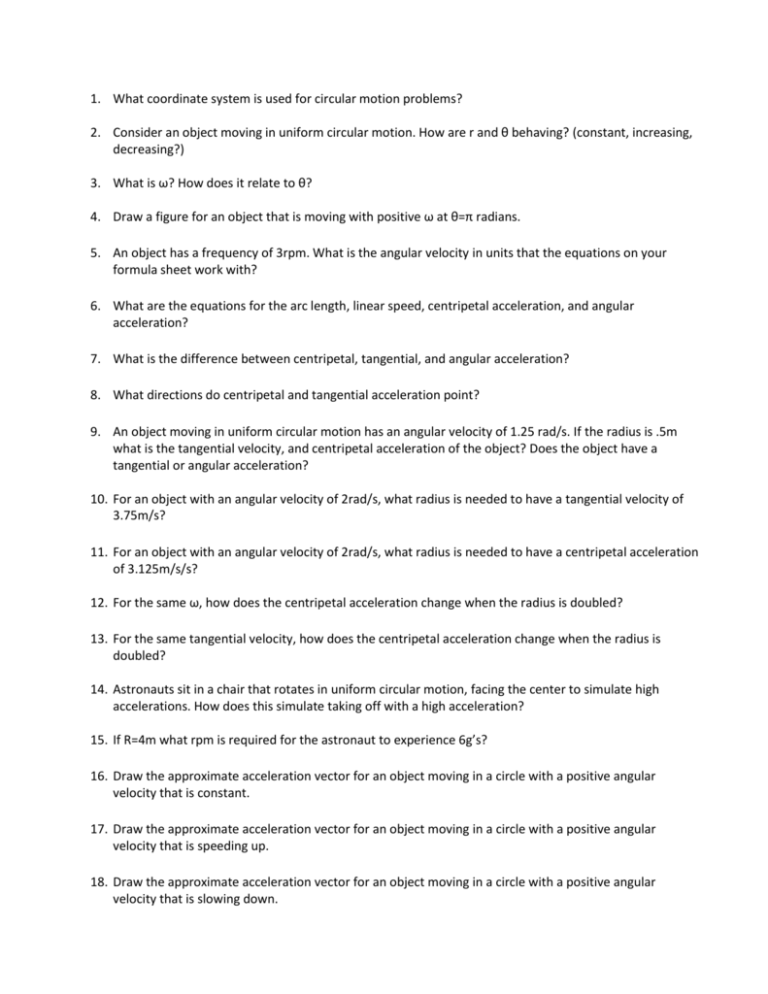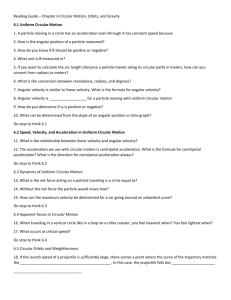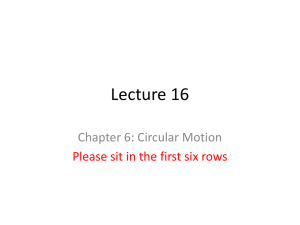Worksheet4
advertisement

1. What coordinate system is used for circular motion problems? 2. Consider an object moving in uniform circular motion. How are r and θ behaving? (constant, increasing, decreasing?) 3. What is ω? How does it relate to θ? 4. Draw a figure for an object that is moving with positive ω at θ=π radians. 5. An object has a frequency of 3rpm. What is the angular velocity in units that the equations on your formula sheet work with? 6. What are the equations for the arc length, linear speed, centripetal acceleration, and angular acceleration? 7. What is the difference between centripetal, tangential, and angular acceleration? 8. What directions do centripetal and tangential acceleration point? 9. An object moving in uniform circular motion has an angular velocity of 1.25 rad/s. If the radius is .5m what is the tangential velocity, and centripetal acceleration of the object? Does the object have a tangential or angular acceleration? 10. For an object with an angular velocity of 2rad/s, what radius is needed to have a tangential velocity of 3.75m/s? 11. For an object with an angular velocity of 2rad/s, what radius is needed to have a centripetal acceleration of 3.125m/s/s? 12. For the same ω, how does the centripetal acceleration change when the radius is doubled? 13. For the same tangential velocity, how does the centripetal acceleration change when the radius is doubled? 14. Astronauts sit in a chair that rotates in uniform circular motion, facing the center to simulate high accelerations. How does this simulate taking off with a high acceleration? 15. If R=4m what rpm is required for the astronaut to experience 6g’s? 16. Draw the approximate acceleration vector for an object moving in a circle with a positive angular velocity that is constant. 17. Draw the approximate acceleration vector for an object moving in a circle with a positive angular velocity that is speeding up. 18. Draw the approximate acceleration vector for an object moving in a circle with a positive angular velocity that is slowing down.











